Jewish Cooking. History and some popular Jewish dishes from JewsFAQ.org. Most of these dishes are Ashkenazic.
Review: Discusses the nature and significance of various traditional Jewish foods, and includes recipes for many of them.
Jewish Cooking. History and some popular Jewish dishes from JewsFAQ.org. Most of these dishes are Ashkenazic.
Review: Coming soon.
JEWISH WEAPONS OF MASS DESTRUCTION
Latkes
A pancake-like structure not to be confused with anything the House of Pancakes would put out.. In a latka, the oil is in the pancake. It is made with potatoes, onions, eggs and matzo meal. Latkas can be eaten with apple sauce but NEVER with maple syrup (sorry Canada ). There is a rumor that in the time of the Maccabees they lit a latka by mistake and it burned for eight days. What is certain is you will have heart burn for the same amount of time. It's a GOOD thing.. Matzot 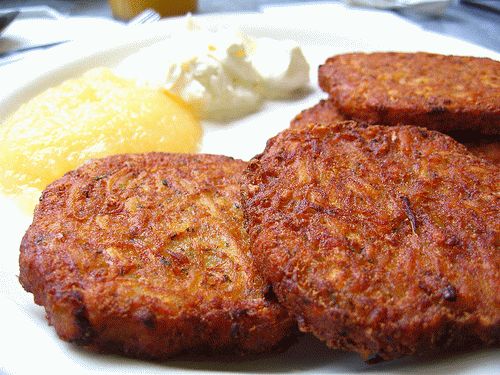
The Israeli's revenge for escaping slavery. It consists of a simple mix of flour and water - no eggs or flavor at all. When made well, it could actually taste like cardboard or Hardieplank. Its redeeming value is that it does fill you up and stays with you for a long time. However, it is recommended that you eat a few prunes soon after. Very soon after. Kasha Varnishkes 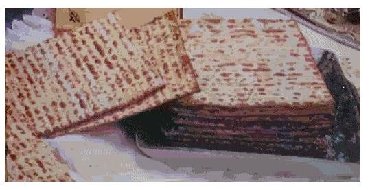
One of the little-known delicacies which is even more difficult to pronounce than to cook.. It has nothing to do with varnish, but is basically a mixture of buckwheat and bow-tie macaroni (noodles). Why a bow-tie? Many sages discussed this and agreed that some Jewish mother decided that 'You can't come to the table without a tie' or, G-d forbid 'An elbow on my table?' Blintzes 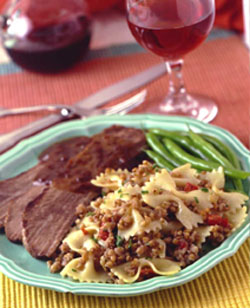
Not to be confused with the Germanic war machine's: 'blintzkreig'. Can you imagine the Jerusalem Post '39 headlines: 'Germans drop tons of cheese and blueberry blintzes over Poland - shortage of sour cream expected.' Basically this is the Jewish answer to Crepe Suzette. Kishka 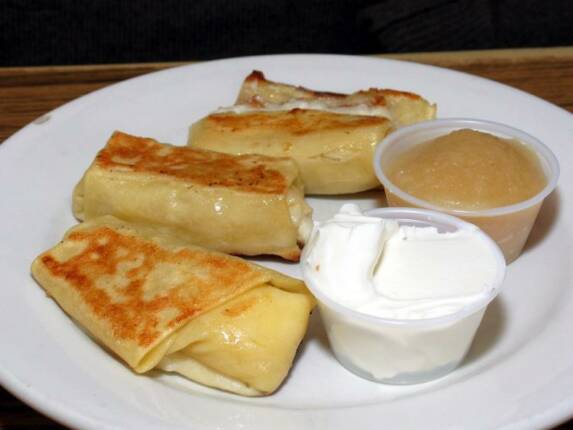
You know from Haggis? Well, this ain't it. In the old days they would take an intestine and stuff it. Today we use parchment paper or plastic. And what do you stuff it with? Carrots, celery, onions, flour and spices. But the skill is not to cook it alone but to add it to the cholent (see below) and let it simmer for 24 hours until there is no chance whatsoever that there is any nutritional value left. Kreplach 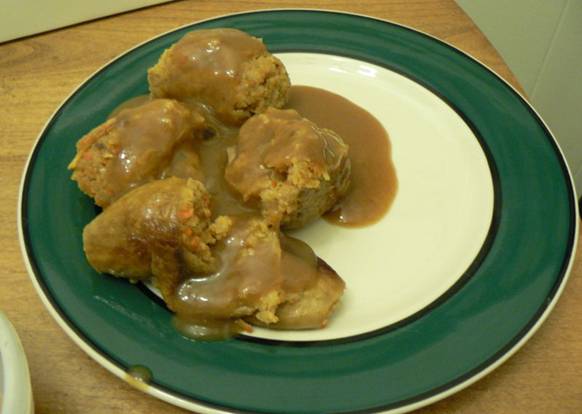
It sounds worse than it tastes. There is a Rabbinical debate on its origins. One Rabbi claims it began when a fortune cookie fell into his chicken soup. The other claims it started in an Italian restaurant. Either way it can be soft, hard, or soggy and the amount of meat inside depends on whether it is your mother or your mother-in-law who cooked it. Cholent 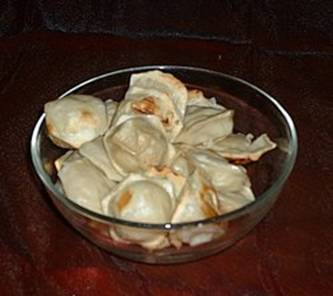
This combination of noxious gases had been the secret weapon of Jews for centuries. The unique combination of beans, barley, potatoes, and bones or meat is meant to stick to your ribs and anything else it comes into contact with. At a fancy Mexican restaurant (kosher of course) I once heard this comment from a youngster who had just had his first taste of Mexican fried beans: 'What! Do they serve leftover cholent here too? A Jewish American Princess once came up with something original for guests (her first cooking attempt at the age of 25): she made cholent burgers for Sunday night supper. The guests never came back. Gefilte Fish 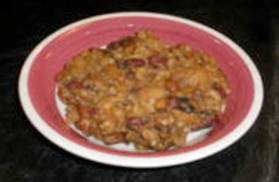
A few years ago, an Israeli politician had problems with the filter in his fish pond and a few of them got rather stuck and mangled. His son (5 years old at the time) looked at them and asked 'Is that why we call it 'Ge-filtered Fish'?' Originally, it was a carp stuffed with a minced fish and vegetable mixture.. Today it usually comprises of small fish balls eaten with horse radish ('chrain') which is judged on its relative strength in bringing tears to your eyes at 100 paces. Bagels 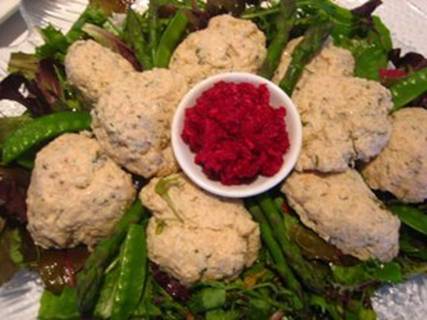
How can we finish without the quintessential Jewish defense weapon, the bagel? Like most foods, there are legends surrounding the bagel although I don't know any. There have been persistent rumors that the inventors of the bagel were the Norwegians who couldn't get anyone to buy smoked lox. Think about it: Can you picture yourself eating smoked salmon or trout on white bread? Rye ? A cracker? Naaa! The IDF research lab looked for something hard and almost indigestible which could take the spread of cream cheese and which doesn't take up too much room on the desert-maneuvers -ration kit. And why the hole? The truth is that many philosophers believe the hole is the essence and the dough is only there for emphasis. It remains an eternal existential discussion topic. 